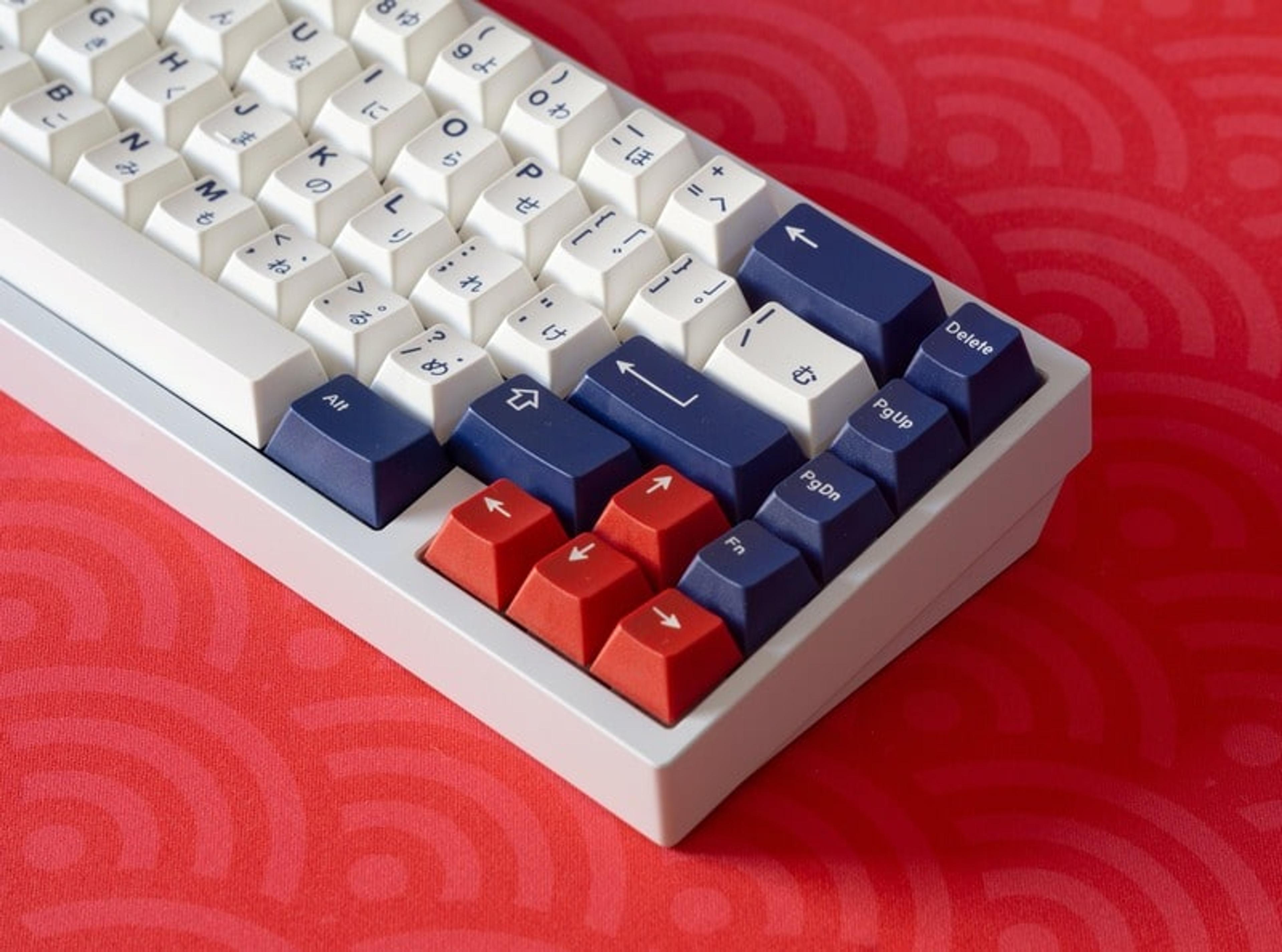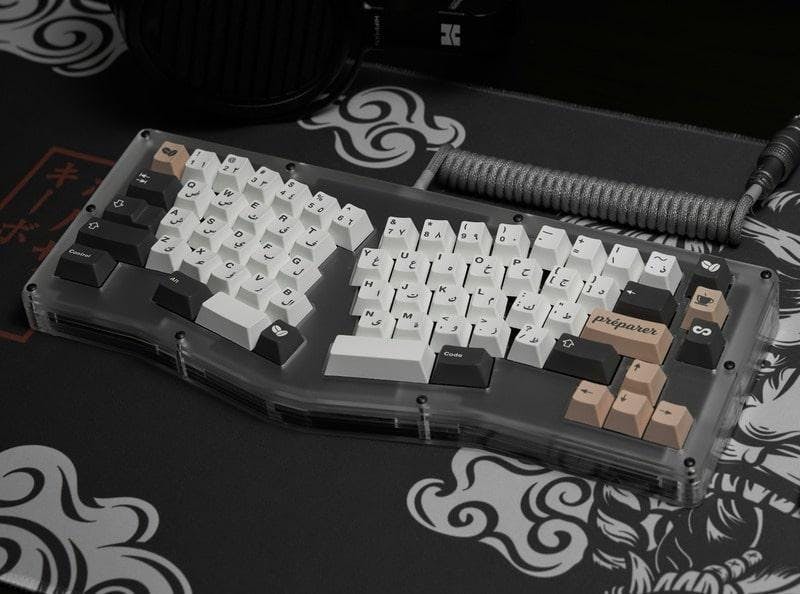
ANSI vs ISO Keyboards: A Comprehensive Guide
The rabbit-hole of mechanical keyboards
Congratulations, if you’ve found this article, it’s likely that you’re exploring the rabbit-hole of mechanical keyboards. It’s an exciting venture, a never-ending Goldilocks situation where you’re finding that new keyboard you just bought to be just a ‘bit too stiff’ or you’re looking for a keyboard with an excellent ‘thocc.’
There’s time to get into that eventually, let’s not get too ahead of ourselves here. Because there are keyboard enthusiasts and manufacturers all over the world, keyboards can vary in more than just switch type, keycap profile, and the type of stabilizers used.
Why Mechanical Keyboards?
Choosing the right keyboard for you is a joyous experience, but it can get quite overwhelming. To start off, there are usually two main types of keyboards on the market – membrane and mechanical.
Membrane keyboards are made with rubber dome switches that press down on to contact pads on the PCB – similar to buttons on a controller. They tend to be more inexpensive than their mechanical counterparts.
There are a few new ‘mechanical membrane’ keyboards on the market and can serve as the middle-ground between the two. However, they lack customizability as keycaps are designed specifically for the dome switch used and switches cannot be changed.
Mechanical keyboards are quite the opposite, offering an entire suite of customizability options to tune a keyboard to your liking.
Mechanical keyboard preference is always going to be largely subjective. Keyboard switch preference, build material, and the type of mounting plate, and mounting method are all valid features to consider when selecting either a pre-built mechanical keyboard or if you’re looking to build your own.
ANSI vs ISO: A Keyboard Layout Comparison
If you look at a keyboard’s specification, you’ll notice that ‘layout’ is among one of the categories on the product information matrix. There’s two major layouts, ANSI and ISO.
ANSI is the American National Standards Institute and ISO is the International Organization for Standardization. These two layouts are what the majority of keyboard manufacturers typically adhere to. ANSI is the more widely adopted layout, while ISO tends to be a more uncommon layout.
ANSI Layout: The American Keyboard Standard
It’s likely that the current keyboard on your desk is ANSI layout, but there are some key characteristics you can look for to tell between the layouts. For example, if your ‘enter’ key is a wide rectangle, it’s an ANSI layout.
The ANSI layout is commonly used in North America, dating back to the 1980s when personal computing started to enter the consumer market. The one drawback is if you’re a typist that requires the use of diacritic marks for other languages, the ANSI layout may make it more tedious.
ISO Layout: The European Keyboard Influence
By contrast, the ISO layout is primarily used in European countries. An easy way to tell if a keyboard is using an ISO layout is to look at the ‘enter’ key. If it’s an upside-down L, it’s likely an ISO layout.
The main advantage of an ISO layout is the ease of use for multilingual typists – as it supports a wider range of languages.

Key Differences Between ANSI and ISO Layouts
To preface, when referencing key sizes, they’re measured with a u (unit). For example, a single key like ‘Q’ is 1u, most ‘backspace’ keys are 2u. Standard ‘spacebars’ are usually 6.25u. The two mainstream sizes of mechanical keyboards fall into one of two categories: full-size and tenkeyless (TKL). Of course, there are smaller keyboard sizes that are tailored to be as minimal as possible – but those tend to be for the ‘hyper enthusiast’ looking to min-max their keyboard preferences.
There’s a little more nuance to selecting a preferred layout, and like building PCs, the answer is largely subjective and is dependent on your own needs and use case. However, it’s good to be aware of the differences between the two – so we’ll go ahead and list them out here so you can get a better understanding of which layout you may prefer.
[images]
Enter Key Design: A Visual Contrast
On ANSI layouts, the Enter key is a wide rectangle, and this is most used. The ISO layout is an upside-down L shape, occupying more vertical space.
In terms of ergonomics, there isn’t a large difference as the ‘enter’ key is in the same position, with ISO being slightly larger vertically. But if you’re in the market for new keycaps, the market is dominated by ANSI layouts, making ISO keycaps a bit more difficult to procure.
[images]
The Placement of the Backslash key
The ‘backslash’ key is also different between the two layouts, ANSI sits above the Enter key while the ISO Backslash key is to the left and below the Enter key, within the upside-down L shape mentioned earlier for the Enter key.
Depending on your use case, you may prefer the location of the ‘backslash’ on one layout over the other. For programmers, the ‘backslash’ is utilized in most programming languages as an escape character.
In computing, an escape character is when you want the computer to literally interpret a string when there’s ambiguity, like in strings that utilize double quotation marks.

Analyzing Shift Key Variations
‘Left Shift’ on ANSI keyboards feature a ‘Shift’ key 2u wide, and ‘Right Shift’ is typically 2.75u. ISO layouts have an identical sized ‘Right Shift’ key, but the ‘Left Shift’ key is about 1u wide.
For typists that rely more on ‘Left Shift,’ you may find an ISO layout to be a bit more cramped. It should also be noted that on ISO layouts, ‘Forward Slash’ is to the right of the ‘Left Shift’ key.
The Alt Key
As for the ‘Right Alt’ key, the ANSI layout has identical Left and ‘Right Alt’ keys on both sides of the Spacebar. Meanwhile, ISO layouts have an ‘’Alt Graph key in place of the ‘Right Alt’ key. This allows for users to access additional characters for additional language support – depending on the keyboard.
Deciding Between ANSI and ISO: Which Suits You Best?
With all that being said, now you may have a better idea of which layout suits your needs more. ANSI and ISO are both similar enough to make a marginal difference unless you have a very specific need that one layout doesn’t meet.
Language and Character Considerations
This is an important note that we should reiterate – if your use case involves the need to type in several languages and you need to switch back and forth between the two, a keyboard with an ISO layout might be what you need.
This isn’t to say that ANSI is incapable of typing in different languages – it just may require some additional steps, like using ‘Left Shift’ + ‘Left Alt’ to bring up Windows’ native layout switching.
Programmer Preferences: ANSI or ISO?
It’s said that software language programmers prefer ANSI due to the need for brackets and parentheses over ISO layouts. Depending on the manufacturer, some ISO keyboards tend to move those keys to make room for other characters for additional languages. If you find yourself needing to type in a second language, the ISO layout may be for you, but if you’re just looking for a standard keyboard – the ANSI layout might be the better choice.
The Ergonomics of Layout Choice
Ergonomics also varies from person to person. Typing form and individual use cases contribute to whether or not ANSI or ISO are better for you ergonomically.
What it really boils down to is whether one is more suited to your needs. Try both layouts to see which you prefer if you’re debating between the two.

Navigating the ANSI vs ISO Keyboard Layout Landscape
No matter the layout, getting into mechanical keyboards is exciting – there's a wealth of information out there, modifications you can make, and unique products on the market that caters to any niche for every budget and preference out there. Finding a keyboard that fits your needs and testing out the different combinations of mounting plates, stabilizers, switches, and keycaps can be a fulfilling experience. After all, besides the mouse – it's the only other main peripheral that you use to interface with your computer, and it should be something you enjoy using in your day-to-day.
Featured Posts

Black Friday Gaming Gear & PC Deals 2025
HYTE Black Friday sales are here, and we’re excited to share the amazing deals we’ll be offering this year! Our Black Friday sales event is your chance to save big on some of our most popular products. From November 20th through December 2nd, enjoy incredible discounts on PC cases and gaming accessories that bring both performance and style to your setup. If you’re looking to upgrade, now’s the perfect time to do it with HYTE.

Official HYTE x Honkai: Star Rail Firefly Collection!
The stars have aligned, and the Official HYTE x Honkai: Star Rail Firefly Collection is ready for launch.

HYTE's 4th Anniversary Sale!
We’ve come a long way, and it’s all thanks to you! To celebrate HYTE’s anniversary, we’re giving back with a limited-time Anniversary Sale from Oct. 5 to Oct. 7.

HYTE X50 & X50 Air Pre-Orders Are Now Live!
The X50 redefines typical PC cases with a unique curved design and performance-driven elements. Pre-order the X50 and X50 Air NOW!
